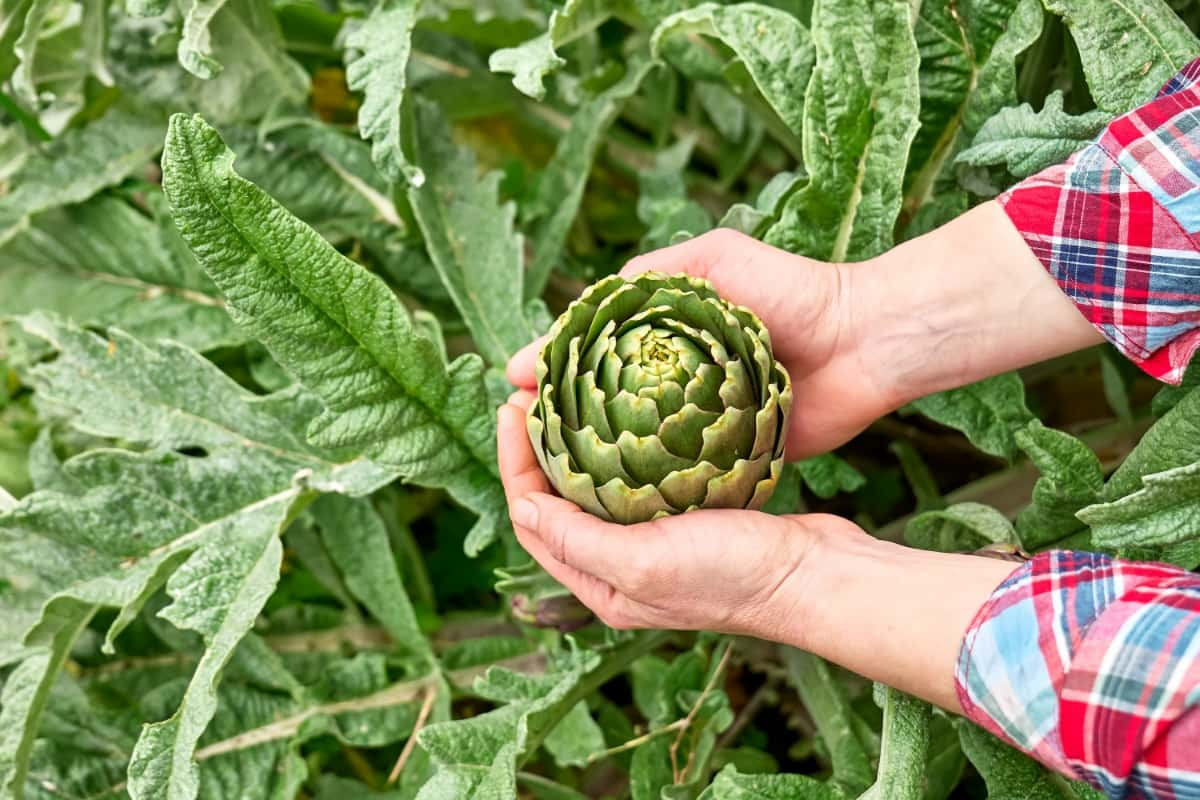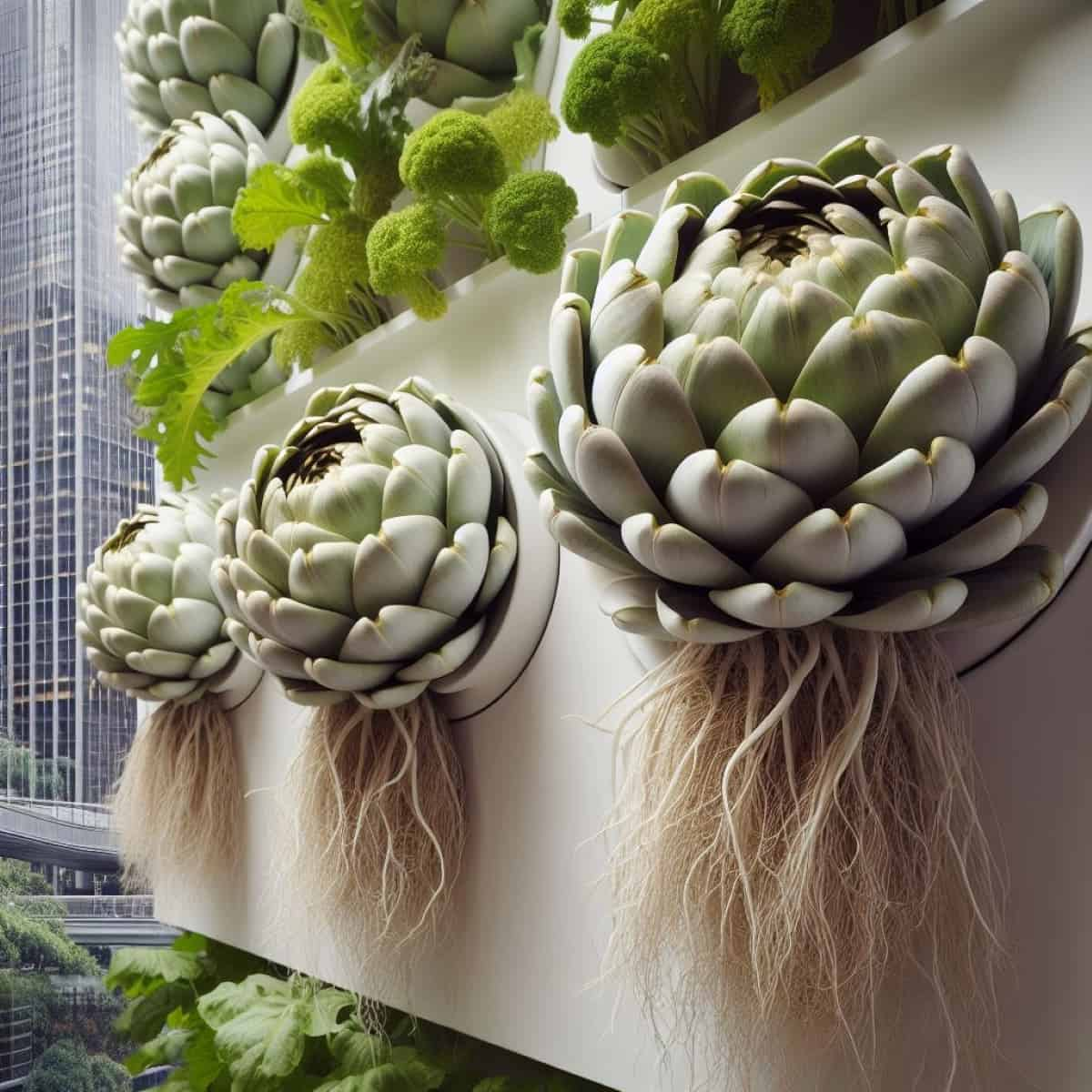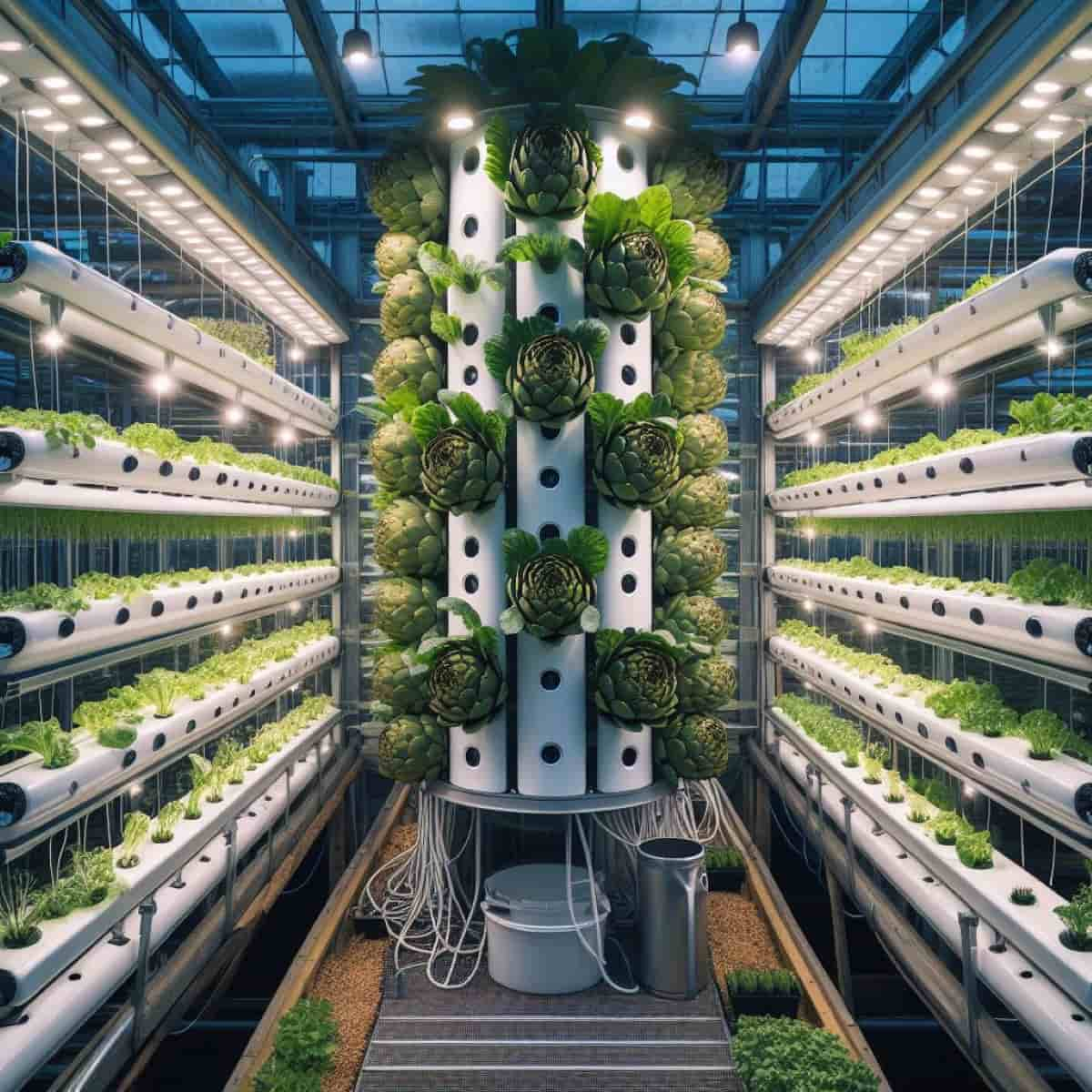Hydroponic and aquaponic systems have gained popularity in recent years as innovative methods for growing various crops, including Artichokes. In hydroponics, Artichoke plants are grown in a controlled environment where water and nutrients are carefully regulated and delivered directly to the roots. Aquaponics takes it a step further by combining hydroponics with aquaculture, creating a symbiotic system where fish waste provides essential nutrients for the Artichoke plants.

Hydroponic and Aquaponic Systems for Artichoke
Benefits
By growing Artichokes without soil in a controlled environment, these methods require up to 90% less water compared to traditional cultivation methods. This not only conserves this precious resource but also reduces the risk of overwatering or underwatering the plants. These innovative methods eliminate the need for traditional soil-based farming, providing numerous benefits and enhancing the overall importance of growing Artichokes.
Another benefit lies in space utilization, as these systems can be set up vertically or horizontally depending on the available area. Additionally, because these systems eliminate the need for soil cultivation practices like tilling or weeding entirely, they reduce labor demands significantly.
Best Practices
Selecting the right variety of Artichokes for hydroponics and aquaponics is crucial. Look for varieties that have been specifically bred for hydroponic or aquaponic systems, as they will be more adapted to thrive in these environments. Next, ensure that your nutrient solution is properly balanced. Artichokes require a mix of essential nutrients along with micronutrients like iron and manganese. Regularly monitor your nutrient solution and adjust as needed to maintain optimal levels.
In terms of environmental control, temperature and humidity are important factors to consider. Proper ventilation is also crucial to prevent excessive heat buildup or high humidity levels, which can lead to disease issues. Pruning is another important practice when growing Artichokes in hydroponics or aquaponics. Removing any damaged leaves or side shoots helps promote healthier growth and prevents overcrowding within the system.
Nutrient Management
These innovative systems allow for precise control over the nutrient levels that are delivered to the plants, ensuring optimal growth and development. In hydroponics, nutrients are dissolved in water and directly supplied to the root system. By closely monitoring and adjusting nutrient solutions, growers can provide Artichokes with exactly what they need at each stage of their growth cycle.
Aquaponics takes this a step further by combining fish farming with plant cultivation. The waste produced by fish provides a rich source of nutrients for the Artichoke plants. Through careful management, growers can maintain a balanced ecosystem where both fish and plants thrive. Additionally, choosing high-quality fertilizers or fish feeds specifically formulated for hydroponic or aquaponic use is essential.
In case you missed it: How to Prune Artichoke Plants for Optimal Growth

These products are designed to deliver the right balance of macro- and micronutrients required by Artichokes. Nutrient management plays a significant role in maximizing yields and maintaining healthy plants in hydroponic and aquaponic Artichoke production systems.
Environmental Control and Monitoring
Creating optimal growing conditions is crucial for successful hydroponic and aquaponic Artichoke cultivation. With these innovative systems, growers can carefully monitor and control various environmental factors, ensuring that their plants thrive. One key aspect of environmental control is maintaining proper temperature levels. Aquaponics provides a natural advantage as water acts as a thermal regulator, helping to stabilize temperature fluctuations.
Adequate lighting ensures sufficient photosynthesis for healthy growth. LED lights are commonly used in both hydroponics and aquaponics due to their energy efficiency and customizable spectrum options. Humidity levels should also be closely monitored. A humidity range of 50-70% is ideal for Artichoke cultivation. Proper ventilation plays a crucial role in preventing fungal diseases and maintaining air circulation within the growing environment.
Pest and Disease Management
An effective strategy is implementing strict biosecurity measures. This involves carefully monitoring the entry of new plants or equipment into the growing area to prevent pests or diseases. Regular inspections and quarantine protocols can help identify and isolate any potential threats before they spread. Another approach is promoting plant health through proper nutrition and balanced growing conditions.
A well-maintained hydroponic or aquaponic system with optimal nutrient levels can strengthen the plant’s natural defenses against pests and diseases. Integrated pest management (IPM) techniques also play a vital role in preventing outbreaks. These include regularly scouting for signs of pests or diseases, using physical barriers like netting to keep insects out and employing biological controls such as beneficial insects that prey on pest populations. Maintaining good sanitation practices within the growing environment is essential too.
Comparing Traditional Soil-Based with Hydroponic
in recent years, hydroponic and aquaponic systems have gained popularity in the agricultural industry. These innovative methods offer a range of benefits and advantages over traditional soil-based cultivation. The main difference between traditional soil-based cultivation and hydroponics/aquaponics is the way plants receive their nutrients. In soil-based systems, plants rely on nutrient-rich soil for their growth.
However, in hydroponic and aquaponic systems, nutrients are delivered directly to the plant’s roots through water or fish waste. Anothercriticaly difference is water usage. Traditional soil-based farming often requires large amounts of water for irrigation purposes. On the other hand, hydroponics and aquaponics use recirculating systems that conserve water by reusing it multiple times.
Additionally, these modern methods provide better control over environmental conditions. In terms of pest and disease management, hydroponic and aquaponic systems have an advantage due to their closed environments that limit exposure to external threats like pests or pathogens present in soil.
Sustainable Practices
These systems eliminate the need for synthetic pesticides and herbicides, reducing chemical runoff into surrounding ecosystems. By controlling environmental variables, farmers can create optimal growing conditions without relying on harmful chemicals. Hydroponics and aquaponics can be set up vertically or horizontally, making efficient use of limited land resources.
In case you missed it: Propagation of Artichokes: Different Methods and Techniques

Furthermore, these methods enable year-round cultivation regardless of climate or geographic location. The integration of hydroponics with renewable energy sources also enhances sustainability efforts within this farming practice. Solar panels or wind turbines can power pumps and other equipment required for system operation, reducing reliance on non-renewable energy sources.
Economic Viability
These systems allow year-round production regardless of climate or seasonality. This means a steady supply of fresh Artichokes throughout the year, which can lead to increased demand and profitability. Additionally, hydroponic and aquaponic systems require less water compared to conventional soil-based farming methods.
This not only reduces operating costs but also helps conserve this precious resource. Furthermore, these systems eliminate the need for pesticides or herbicides since they provide a controlled environment that minimizes pests and diseases. In terms of labor costs, hydroponic and aquaponic systems can be highly efficient due to their automation capabilities.
In case you missed it: How to Protect Artichoke Plants from Pests and Diseases

Conclusion
Both hydroponic and aquaponic systems offer numerous benefits for Artichoke production. They require less space compared to traditional farming methods since there is no need for large fields or garden beds. These systems provide unique advantages such as efficient water usage, reduced pest problems, and higher yields.
- Feed Your Flock for Less: Top 10 Tips to Save on Chicken Feed
- Ultimate Guide to Ossabaw Island Hog: Breeding, Raising, Diet, and Care
- Hatching Answers: The Top 10 Reasons Your Chickens Aren’t Laying Eggs
- Eggs and Economics: Breaking Down the Cost of Raising Backyard Chickens
- Defend Your Greens: Proven Methods to Keep Iguanas Out of Your Garden
- Ultimate Guide to Cinnamon Queen Chicken: A Comprehensive Guide for Beginners
- Ultimate Guide to California Tan Chicken: Breeding, Raising, Diet, Egg-Production and Care
- Ultimate Guide to Marsh Daisy Chicken: Breeding, Raising, Diet, and Care
- 10 Types of Chicken Farming Businesses You Can Start for Profits